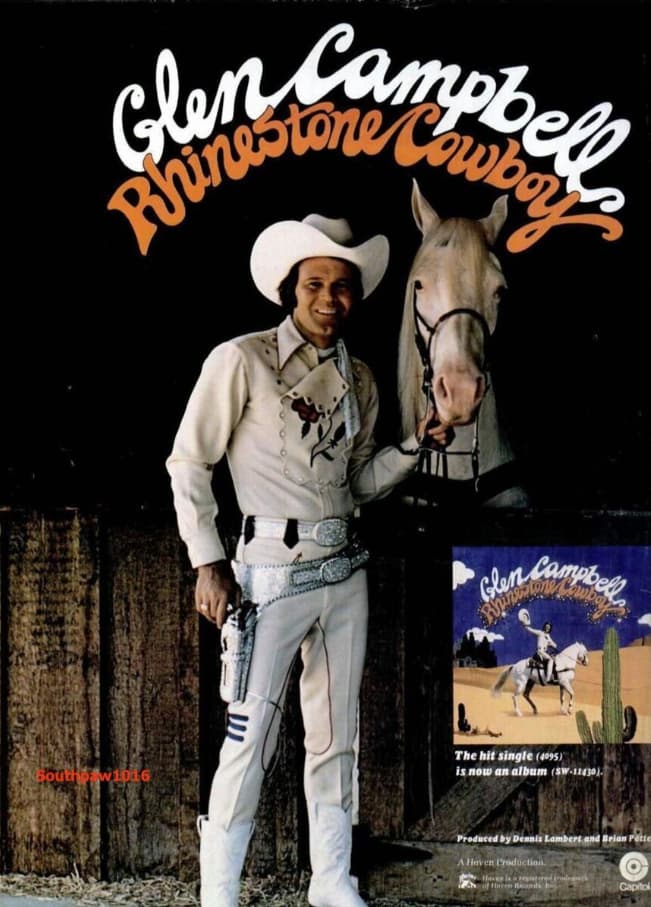
Glen Campbell’s “Rhinestone Cowboy”: The Anthem of a Timeless Dreamer
When Glen Campbell released “Rhinestone Cowboy” on May 26, 1975, few could have predicted the profound impact it would have on both country and pop music. The song, originally penned and recorded by Larry Weiss in 1974, found its true voice when Campbell took it under his wing. At a time when the lines between country and pop were more defined, “Rhinestone Cowboy” blurred those boundaries, appealing to a wide audience and securing its place as a cultural milestone.
“Rhinestone Cowboy” is more than just a song; it’s a story—a tale of perseverance, hope, and the pursuit of a dream, no matter how rough the journey. Campbell, a seasoned artist with years of experience, connected deeply with the lyrics. The narrative of a performer who has paid his dues, weathered the storms, and yet remains determined to shine resonated with Campbell on a personal level. This connection is palpable in every note he sings, bringing authenticity and emotion to a song that might have otherwise remained under the radar.
The song’s rise to fame was meteoric. Upon its release, “Rhinestone Cowboy” rapidly climbed both the Billboard Hot Country Singles and Billboard Hot 100 charts. By the end of the summer of 1975, it had claimed the No. 1 spot on both charts—a rare achievement that underscored its crossover appeal. For three nonconsecutive weeks, it ruled the country chart, and for two weeks, it held the top position on the Hot 100. It wasn’t just a hit; it was a sensation, capturing the hearts of listeners across the globe.
The success of “Rhinestone Cowboy” was not just limited to the United States. It topped the charts in Canada and several other countries, solidifying Campbell’s international fame. The song’s appeal lay in its universal theme—the dream of making it big, of surviving the hardships, and finally, standing in the spotlight. This was a theme that resonated with people from all walks of life, making “Rhinestone Cowboy” a song that transcended genres and generations.
The song’s chart performance was remarkable. During the week of September 13, 1975, “Rhinestone Cowboy” achieved the rare feat of topping both the country and Hot 100 charts simultaneously. This was a significant milestone in music history, as it was the first time a song had done so since Jimmy Dean’s “Big Bad John” in 1961. This achievement not only highlighted the song’s broad appeal but also marked a turning point in Campbell’s career, cementing his status as a crossover artist.
In the years following its release, “Rhinestone Cowboy” continued to resonate with audiences. It was featured in a promotional compilation album and, after Campbell’s passing in August 2017, the song saw a resurgence in popularity, charting on the Country Digital Song chart at No. 12. By that time, it had been downloaded more than 368,000 times in the digital era, proving that its message of resilience and hope remained as relevant as ever.
“Rhinestone Cowboy” stands as a testament to Glen Campbell’s ability to connect with listeners on a deeply personal level. It’s a song that tells the story of a man who never gave up on his dreams, no matter how tough the road became. In doing so, it became an anthem for dreamers everywhere, a timeless reminder that with perseverance, anyone can find their moment to shine.